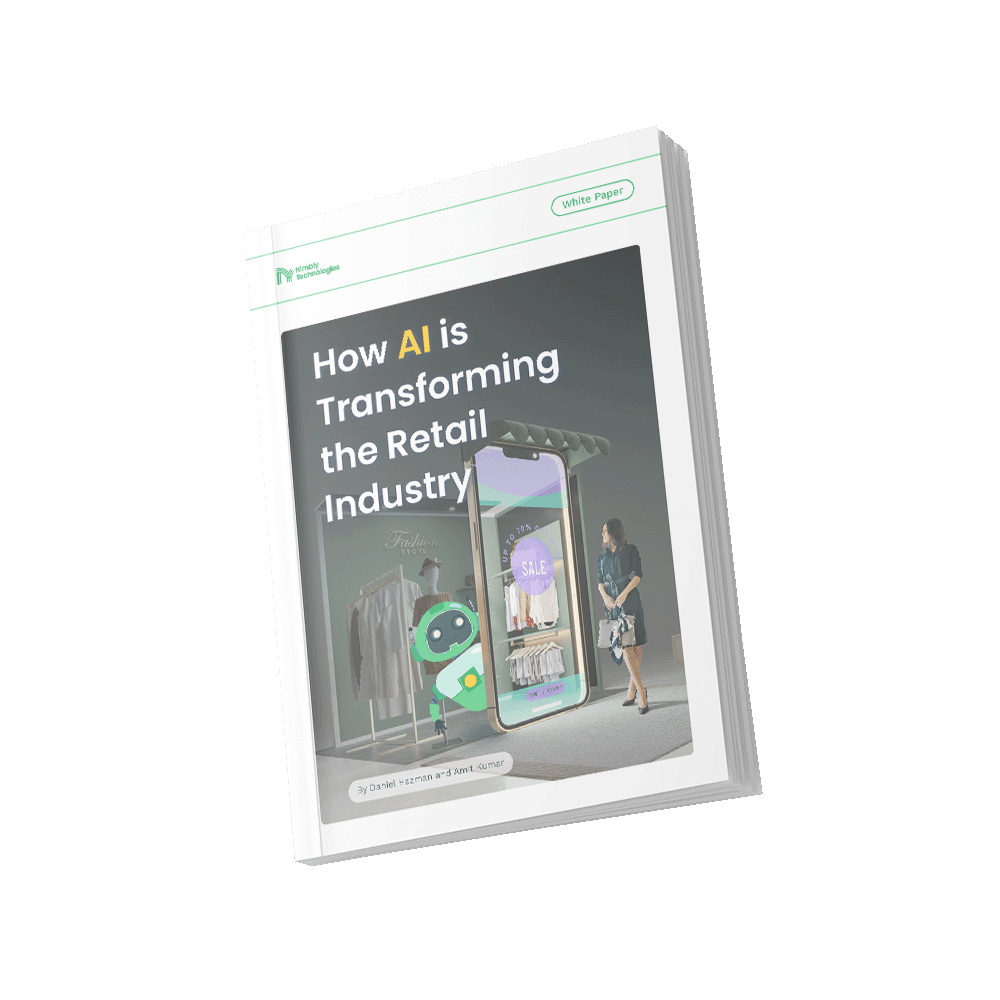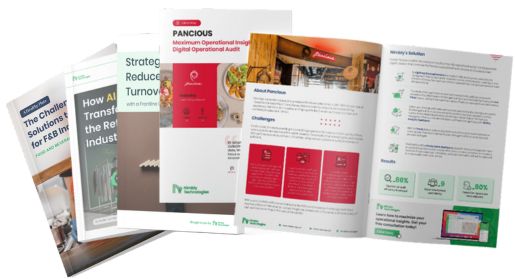

Retailers are leveraging a range of AI technologies to enhance their operations and customer experience. Machine learning algorithms are employed for tasks, such as demand forecasting, inventory management, and pricing optimization. Natural language processing enables chatbots and virtual assistants to provide personalized customer support and address inquiries. Computer vision capabilities enable facial recognition for personalized marketing and cashierless checkout systems. Predictive and prescriptive analytics facilitate targeted marketing campaigns, customer segmentation, and customized recommendations.
Below are some prominent, real-world AI applications in the customer buying journey and retail operations:
AI algorithms analyze customer data, purchase history, and browsing behavior to deliver personalized recommendations and targeted marketing campaigns through various channels, including websites, mobile apps, and emails.
As AI continues to evolve, predictive modeling will become more precise in anticipating customer behavior, enabling hyper-personalized and more relevant products and service recommendations.
The real-time factor would also be another advantage of predictive modeling; by adapting instantly to changing circumstances and behaviors, AI adapts quickly to further improve and customize a customer’s overall experience in a matter of seconds.
Learn how Nimbly can help enhancing your brand experience >

Chatbots and virtual assistants provide real-time guidance and personalized recommendations to shoppers by analyzing customer preferences and buying patterns.
By using natural language processing, the AI-enabled tools can interact with customers, answer queries, provide suggestions, and assist with purchases, which enhances the overall shopping experience.
One of the most well-known virtual shopping assistants, Alexa, can be used to order products directly from Amazon. By simply saying "Alexa, order [product]," it will find the item (or the most similar one) in one’s order history and ask for confirmation to order the product. If the item is not in one’s history, Alexa will suggest Amazon's Choice of products.
By combining elements of both online and offline shopping, augmented reality (AR) has the potential to offer a more integrated and immersive experience that can drive customer engagement and satisfaction and sales. AR plays a pivotal role in bridging the gap between online and offline experiences, creating a seamless transition between the two.
AR can provide customers with virtual experiences to see how a product would look on them or in their home environment before making a purchase. This is widely used in the fashion and home decor industries. For example, a customer can virtually "try on" clothes or see how a piece of furniture would fit into their living space.

With AR, customers can aim their smartphone at a product in-store to get more information about it, such as customer reviews, product specifications, or usage instructions. This enriches the offline shopping experience with the kind of information typically found online.
Retailers can use AR to create interactive experiences in their physical stores. H&M is doing this by introducing an interactive mirror at its flagship store in Times Square, New York, that uses voice and facial recognition to interact with customers. The mirror can provide fashion advice, recommendations, and even complete a sale through a QR code that links to the suggested product online.
AR can be used to provide interactive customer support. For example, a customer assembling a piece of furniture could use an AR application to visualize each step of the process, bridging the gap between the online purchase and the offline product usage.
AI-powered self-checkout systems enable customers to scan and pay for items automatically, reducing queues and enhancing the overall shopping experience. Amazon is one of the pioneers in this space with its Amazon Go stores. Shoppers use the Amazon Go app to enter the store, pick up the items they want, and then simply walk out of the store.
AI technologies, including computer vision, sensor fusion, and deep learning, automatically detect when products are taken from or returned to the shelves and keep track of them in a virtual cart. When the customer leaves the store, their Amazon account is automatically debited for the items they take, and a receipt is sent to the app. Future enhancements might involve personalized in-store experiences, with AI systems recognizing individual customers, guiding them to items they might be interested in, offering customized deals or recommendations, and providing their preferred pick up or delivery options.

Machine learning algorithms analyze historical sales data, external factors, and seasonal trends to accurately forecast demand, enabling retailers to optimize inventory levels, reduce stockouts, and minimize excess inventory. For example, Coca-Cola uses machine learning to determine what products are selling at different times through their vending machines. The data collected from these machines is analyzed, and predictive models are created to forecast demand. This helps to optimize inventory management, ensuring popular products are always in stock while less popular ones are not overstocked.
Learn how Nimbly can help you beer forecasting with Dashboard Analytics >
AI technologies monitor real-time inventory levels, track sales data, and utilize predictive analytics to automatically trigger replenishment orders, optimize supply chain operations, and improve inventory management efficiency. In-store, AI-based computer vision technology enables smart shelves that automatically detect inventory levels and trigger replenishment. Whole Foods and Target are among the retailers that have used order-to-shelf fulfillment models to declutter backrooms and bring just the right amount of products to shelves.
Now when store employees put in an order, they provide a precise count of products needed for replenishment instead of a general estimate. When the order is received by the distribution center, the items are precisely packed on pallets based on the layout of that store. This allows the items to be brought in off the truck and immediately stocked on the shelves, avoiding overstock in the backroom.
Computer vision systems combined with AI algorithms can analyze images and videos to identify anomalies and quality defects, ensuring consistency and quality standards in food products. For example, Walmart has created Eden, a suite of apps that uses machine learning to predict the freshness of fruits and vegetables.
Eden inspects photos of produce to estimate its current level of freshness and predicts their shelf life. Therefore, if a container of bananas (what Walmart sells more than anything else and billions of each year) had arrived at the distribution center at a different level of ripening than expected, Walmart could reroute the original intended store destinations accordingly to maximize the bananas’ shelf life, reducing food waste and improving food safety.
Learn how Nimbly can help you ensure consistency with Digital Routines >
Every day, one third of all food produced or harvested goes to waste, which is both a sustainability and cost issue. Retailers like Ikea are using AI solutions to help kitchens cut down on food waste by automatically tracking what gets thrown away. Its system uses a camera, a set of smart scales, and the same type of machine learning technology used in autonomous vehicles to analyze
what's in the bin. This type of solution enables businesses to identify trends and cut down on waste, thereby ensuring the best
use of food products.
The above AI use cases demonstrate how technology is transforming the sector by enabling personalized experiences, optimizing operations, ensuring product quality, and reducing food waste. While AI adoption in retail holds immense potential, it also presents several challenges and risks that need to be addressed to ensure successful implementation and mitigate negative impacts.
